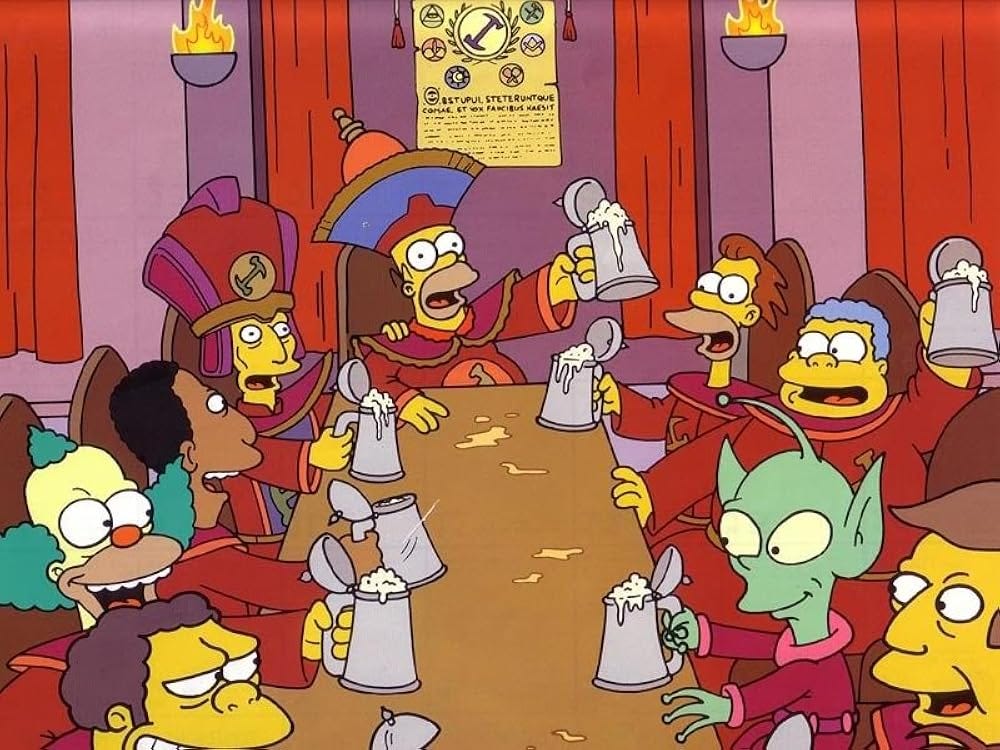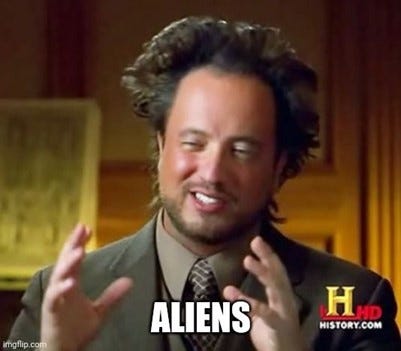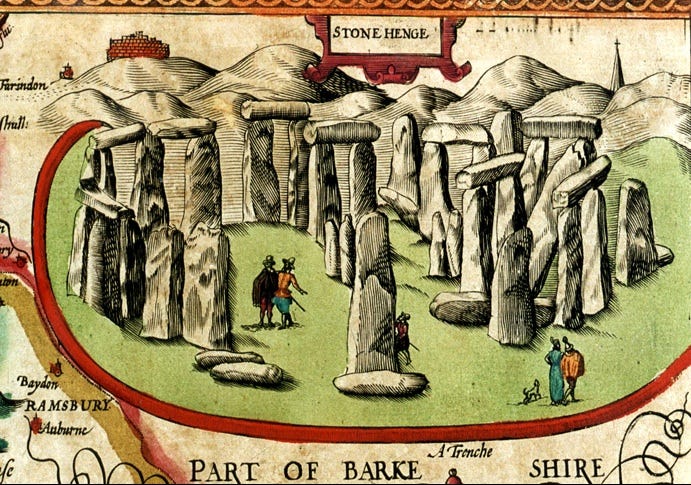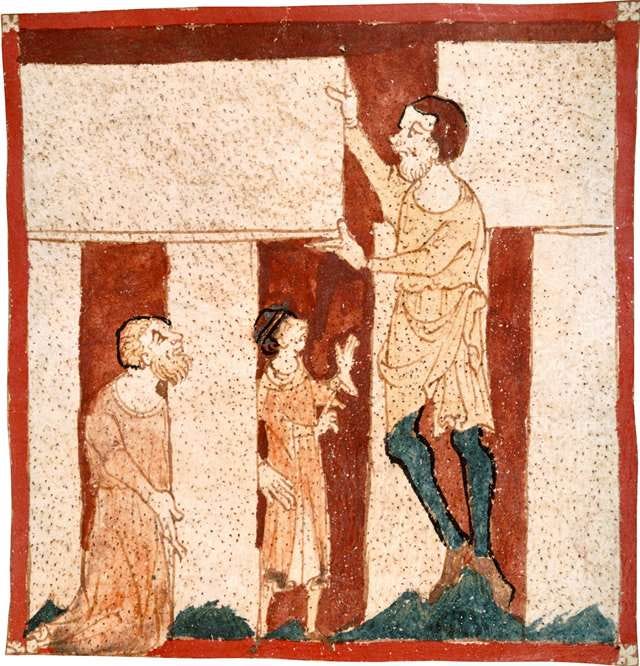Ancient Aliens is a much-mocked American tv series exploring what has been described as ‘pseudoscientific’ and ‘pseudoarchaeological’ explanations of the architectural wonders of the past. It is particularly famous for this screenshot-turned-meme where the eccentric presenter Giorgio A. Tsoukalos lifts up his hands and in explanation simply says:
The urge to turn to supernatural explanations for ancient marvels has been a feature of human psychology for a long time. Stonehenge was even more of a mystery in medieval and early modern England than it is today and a myriad of explanations were put forward to explain who had created it and why.
James I and Stonehenge
When James I came to the English throne in 1603 he brought with him a fascination with witchcraft, magic, and the occult. Though initially extremely worried about the presence of these dangerous forces, he became increasingly fascinated by particular strands of supernatural enquiry and was especially intrigued by the esoteric legends associated with King Solomon.
I won’t go too much into detail about that here because the connection between early modern magicians and the apocryphal magic of Solomon was what my PhD thesis was about and I talk about it all the time. Suffice it to say that James and his chief architect Inigo Jones became increasingly obsessed with how Solomon had built the great temple in Jerusalem, a project that is described at length in the Bible, but is embellished in esoteric literature like The Testament of Solomon. In The Testament, Solomon uses his extraordinary wisdom and authority to conjure and command a ragtag bunch of demons to provide hard labour.

Could this demonic building work explain how Stonehenge came to be? In 1620 James sent Jones to survey the site and the drawings he came back with are copied down by his assistant John Webb in The Most Notable Antiquity of Great Britain Vulgarly called Stone-Heng (London, 1655).
You can see, of course, that this is clearly the floorplan of Solomon’s temple. Just look at that esoteric star shape! Such beautiful geometry. Could human beings have just built something that looked like that? There’s only one answer:
At the very least, Jones and James seem to have been convinced that Stonehenge was a primitive ancient British copy of what might have once existed in Jerusalem, whether or not supernatural power had been used in its contruction. It was, in part, this sort of occult surveying which made Jones an attractive figure to the Freemasons who adopted a purported ‘Inigo Jones Manuscript’ as one of their esoteric texts. It frames Jones as the Hiram to James’ Solomon, Hiram being the neighbouring king who had helped Solomon build his temple in the biblical account.

Merlin
The move to associate Stonehenge with Solomon’s great building works is related to a similar myth that was unique to England. In Geoffrey of Monmouth’s 1136 Historia Regum Britanniae, Merlin is reported to have told the British king Aurelius Ambrosius that a particular circle of stones in Ireland would make a fitting tribute to the fallen dead and should be transported to Wiltshire. When Aurelius makes the sensible comment that we already have stones in England, Merlin says:
‘They are mystical stones, and of a medicinal virtue. The giants of old brought them from the farthest coasts of Africa, and placed them in Ireland, while they inhabited that country. Their design in this was to make baths in them, when they should be taken with any illness. For their method was to wash the stones, and put their sick into the water, which infallibly cured them. With the like success they cured wounds also, adding only the application of some herbs. There is not a stone there which has not some healing virtue.’
Book 8, Chapter 10.
The idea that giants had carried them (in some versions the stones themselves are the petrified bones of giants) is similar to the tales of Solomon’s use of demons or ‘jinn’ to move the great blocks of the temple.
We know that the early moderns still remembered the Merlin story because, for example, Michael Drayton repeats it in his Poly-Olbion in 1612:
‘And with courageous spirits thus boldly sang aloud; | How Merlin by his skill, and Magiques wondrous might, | From Ireland hither brought the Stonendge in a night… | And set his Fiends to work upon the mightie frame; | Some to the Anvile: some, that still inforc’t the flame…’
Michael Drayton Poly-Olbion, (London, 1612) p. 62.
It’s possible that the Merlin story was a direct copy of the Solomonic legend in the first place, so it’s fitting that James and Jones stripped away the association with the Arthurian legend and restored the connection with Solomon’s temple. The idea that ancient architecture built in the Solomonic mode contained hidden truths about the universe survived long after James I’s death. It did not decline but rather thrived in the Enlightenment with Isaac Newton developing Jones’ ideas about the spiritual geometry of Stonehenge.1
Was it Merlin or was it Solomon? Was it giants, demons or aliens? It depends who you ask. Like many examples of ancient architecture, Stonehenge has long inspired stories about strange feats of magic and hidden truths — and it turns out that Ancient Aliens is continuing a tradition as old as the stones on the hill.
Subscribe for more articles on a range of fascinating subjects. I publish my ‘horror moments’ on Thursdays, and other curious articles like this on Mondays.
Remember that you can pay to subscribe for extra benefits or buy me a coffee here to keep me writing. You can also like, share, comment, and recommend to help the substack grow. Thank you!
See Tessa Morrison’s ‘Solomon’s Temple, Stonehenge, and Divine Architecture in the English Enlightenment,’










Popping in with another early modern theatre story!
In my graduate program, we performed (maybe for the first time in the U.S.) The Birth of Merlin by William Rowley, which is a play about a woman named Joan Go-to't who has sex with the Devil and then gives birth to a fully grown wizard Merlin.
Much chaos ensues after that - some dragons show up, a portentous comet, a war with Wales, and a 1v1 showdown between Merlin and his father. After defeating the Devil, Merlin tells Joan that he's magically constructed Stonehenge as a kinda-prison for her to live out the rest of her life in for 1- having premarital sex and 2- having that premarital sex with the Devil.
Our production cut that speech because we thought that was too much of a bummer! Joan is a good mom to Merlin and the script says she wasn't aware the guy she was sleeping with was the Devil himself. Justice for Joan!
Thanks for another intriguing post. The changing association of places and people throughout history is fascinating, particularly discovering the benefit brought by the alleged connection at the time.
Don't dismiss Tsoukalos though - look up "Centauri hairstyle" and consider what extraterrestrial knowledge he might have 😆.